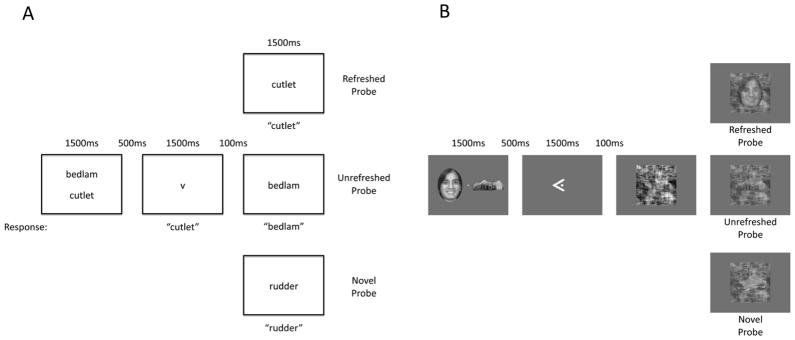Figure 1. Task diagrams.

A: Design for Experiment 1. Participants first saw two words, followed by an arrow cue instructing them to think back to (refresh) one of the just-presented words and speak it aloud. After that, a probe word was presented, and participants were instructed to speak it aloud as quickly and accurately as possible. Probes could either be a representation of the refreshed word (refreshed probe) or the unrefreshed word (unrefreshed probe), or a previously unseen novel word (novel probe). The design of Experiment 2 was similar, except that instead of an arrow cue, the word itself was presented onscreen for participants to read aloud. B: Design for Experiment 3. Participants first saw two pictures, followed by an arrow cue instructing them to briefly visualize (refresh) one of the just-presented pictures. A series of scrambled noise images then gradually faded away to reveal either the refreshed item (refreshed probe), the unrefreshed item (unrefreshed probe), or a previously unseen novel item (novel probe). Participants were instructed to press a “stop” button as soon as they detected the probe picture underneath the noise.
